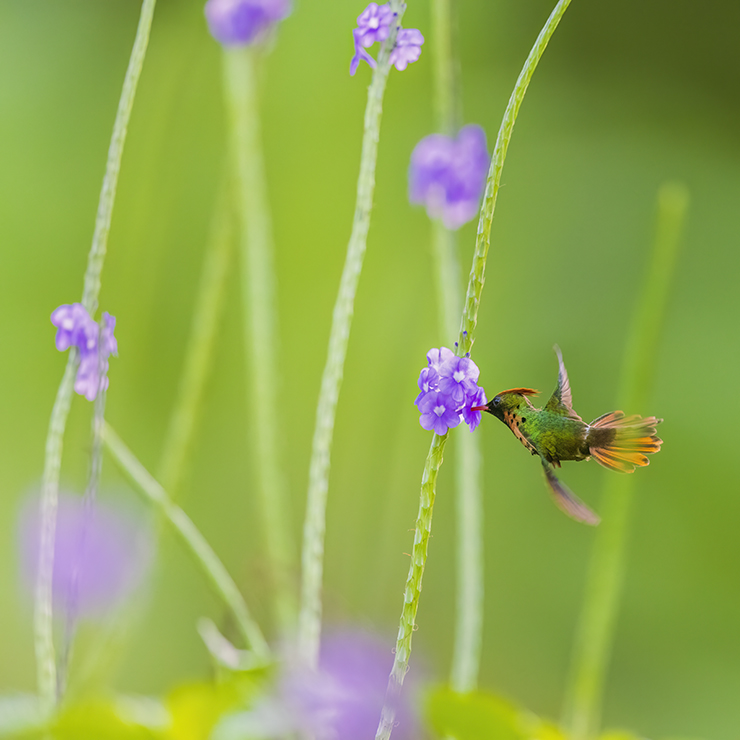
Nomadic life is slowly and surely taking root on our end, and this brings its fair share of challenges. All fades under the blinding lights of new backyard birds, however. Regular readers will be well aware that I am a huge fan of sitting at home, sipping coffee, and birding. The benefits of long-term observation of the same birds have fertilized my psyche in ways I never thought possible. Numerous blog posts have been written about the birds I see every day – you can check out the fruits of our rewilding project in a residential area here and the last time we changed backyard here.
This time, we are back in Trinidad and have relocated to a picturesque lodge in the very heart of the island. The thick melodies of Cocoa and Spectacled Thrushes tend to be the first sounds under the lightening sky. Orange-winged Parrots may be abundant elsewhere, but here their presence is wholly overshadowed by a tremendous mixed flock of Crested Oropendola and Yellow-rumped Cacique. These gregarious icterids have a daily commute that crosses the property here, and each morning and evening they travel from tree to tree in wave after wave of chatter and flutter. The entire passage lasts almost an hour, during which one may observe an uncountable number of Fork-tailed Flycatchers also flying overhead on their respective commute.
Swifts are aplenty, one is likely to see Gray-rumped, Band-rumped, or Short-tailed Swift hunting insects each morning. A few days ago there was a flock of approximately thirty White-collared Swifts riding air currents over the property. I hadn’t seen these large swifts in many years but happened to land great views of two flocks on two consecutive days. Interesting.
One step away from swifts are hummingbirds, and at least 13 species of these winged jewels flutter about from sunrise to sunset. Feeders aren’t a significant feature here, as there are ample flowers both on large trees as well as cultivated areas within the property. In fact, part of the operations here involves the sale of flowers – so there is more than enough nectar to go around.
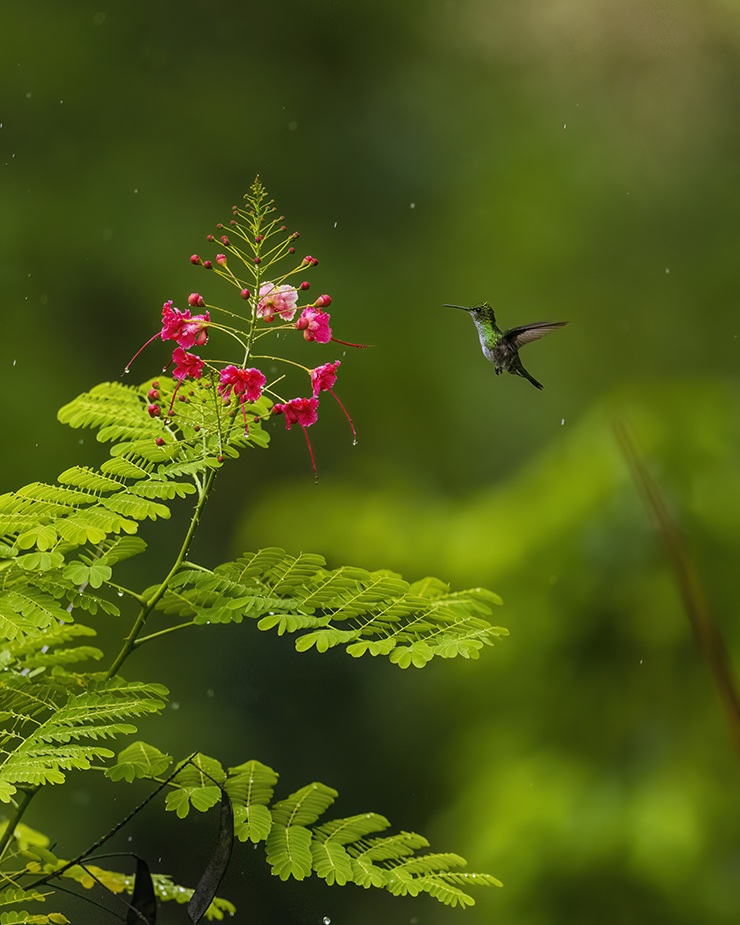
White-necked Jacobin
A sizeable vervain/verbena attracts several species to the main entrance, including Blue-chinned Sapphire, Ruby-topaz Hummingbird, and Tufted Coquette. I have brought many a guest here over the years, and it has often proven difficult to prise them away from this hedge once check-in was completed. To get around this, I either leave the afternoon free – or check in during the night.

Tufted Coquette
Arriving here during the hours of darkness presents its own cadre of obstacles, however. Common Pauraques sit on the roadway, so stopping to admire these is inescapable. Even having a conversation at night can prove difficult, as we are often interrupted by the wail of a Common Potoo, or the intermittent hooting of a Tropical Screech-Owl. Ferruginous Pygmy-Owls are fairly common as well, only last night a Barn Owl shrieked as it flew over. A few nights prior, we were chatting with a client of mine listening to a not-so-distant Mottled Owl when it suddenly stopped calling. Seconds later, the unmistakeable silent silhouette of an owl glided overhead and over the opposite treeline.

A pair of Channel-billed Toucans dries off after one of the many showers of rain we’ve been having recently. They aren’t abundant by any means, but nevertheless are either seen or heard daily.
If birds aren’t your thing, there are countless other creatures that occupy this place. From all manners of spider to beetle to frog to bat – there is something for everyone. Here remains one of the few places we have seen a Mole’s Day Gecko – one of the smallest lizards on earth. Larger reptiles also are in abundance, including several skinks and ground lizards, Gold Tegus, and Green Iguanas. I even saw a sleeping capybara this morning!
Undoubtedly however, the stars of the show are the birds. Turquoise Tanagers rocket past as I type this, and a pair of White-winged Becards interrupted our peaceful breakfast a short while ago. Plumbeous Kites wheel overhead, and yesterday a pale morph Short-tailed Hawk dive-bombed something in the garden. A few days ago I was hearing the diminutive Short-tailed Pygmy-Tyrant from frustratingly close by, but I didn’t get a visual before a sudden downpour of rain arrived. The property boasts a bird list of over 160 species – and in the couple weeks we’ve been here we added one more: Great Black Hawk. These large raptors are actually quite rare on Trinidad but seem to be breeding nearby as one of the sightings was of a juvenile.
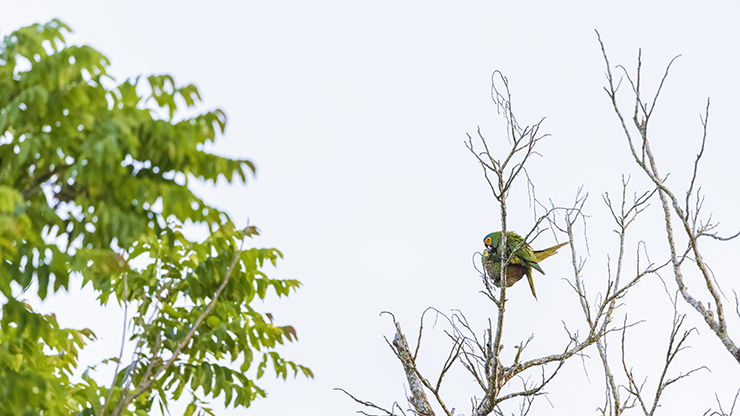
Yes, Red-bellied Macaws not only mate on the property, but nest here too!
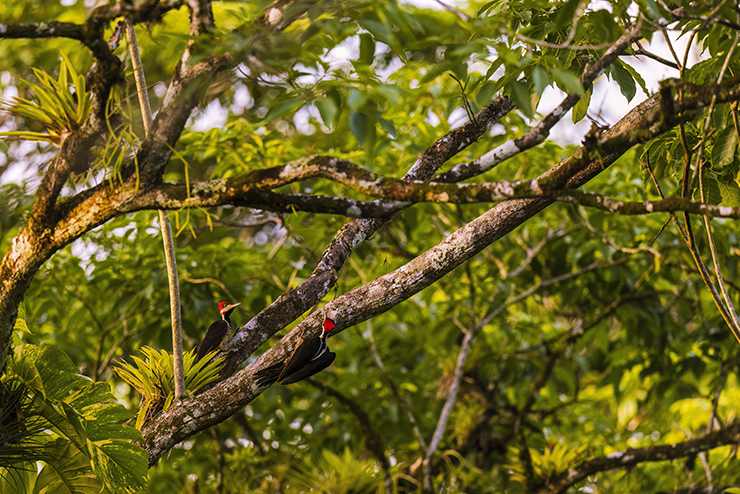
Stands of large trees attract the largest woodpecker in T&T: Crimson-crested Woodpecker.
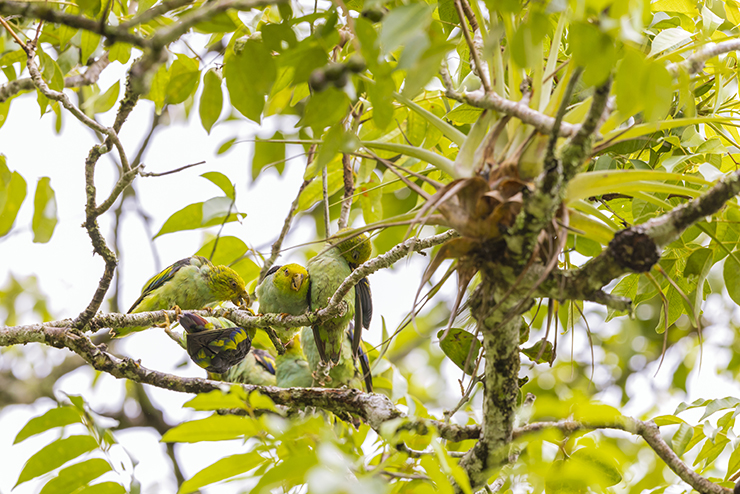
Routine sightings of Lilac-tailed Parrotlet are of flocks screaming hundreds of feet overhead, so it was incredible to spend hours with this small group of 12-15 birds as they preened, huddled, and bickered.
All this to say that I look forward to soaking in the presence of a new cast of backyard birds. Going out birding remains an option, as this new location puts me in prime position to access many sites that previously required a commute of more than an hour.











Leave a Comment